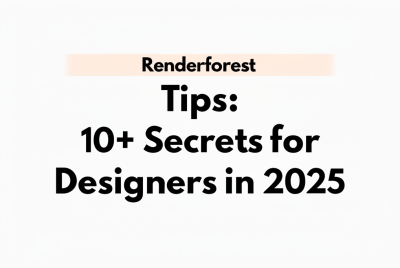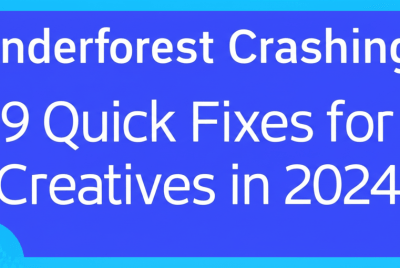Jai Chakrabati had honed skills in the software development field and grew prodigious over them. He was renowned as the next to take over due to his honed skills and so it came as a shock when Charabati walked into the office to announce his resignation. His reason? Most believed, chakra had discovered the next big thing in software development and was heading out to launch his own startup, others thought he was traveling back to India on a self-discovery quest to … discover this next big thing. In truth, Charabati had an idea but it wasn’t something any of his colleagues could picture… Chakra was leaving the world of algorithms and binaries for the world of prose writing. A skill he had honed alongside code writing for many years and was now intent on pursuing a career path based on it.

For chakra code writing and fiction were the same thing; both required imagination and an orderly arrangement of thoughts, were needed to address issues and be understandable to others. The fact that one was done through numbers and another through letters was the same for chakra.
The chakra story holds the same for Remi, a photographer and video editor who says his love for his craft wasn’t tied to “carrying cameras” but based on a love of colors i.e. the beauty and dynamism they introduce. He’s pursued this love first as a stylist and now as a color grader.
In both cases job titles mattered less , what was important was abiding by a profession which aligned with an inner stirring or drive.
With Artificial intelligence tools for creativity springing up, understanding your inner drive is a guide to surviving a world constantly redefining the tasks of employers. If What we do today can be handled tomorrow by AI tools for design, what then?
As designers, regardless of type i.e. a freelancer seeking how to land your first client or a designer looking to hire others an inner drive dictates our chosen paths.
Recognizing this inner drive above job titles not only answers the question “Why do I design” but helps us build an identity based on our authentic self and not a profession.
Beyond Job Titles: Embracing Your Inner Drive

For hundreds of years, job titles have been a universal symbol sending meaningful signals to those around us of skill, status, and identity both in and outside of our organization, says Keath of training job mag.
The easiest way to communicate importance is “ I am a lawyer”. The best way to say you are accomplished is “ I hold an advanced degree in Biomechanics ”s. But deep down no one is made up of laws or advanced degrees or a set of Photoshop skills and there are downsides to this manner of introduction.
Seeing Yourself As More Than An Artist Matters but Why?
The NGD universe is a good example of what happens when building an identity around a profession; creatives live for the glory of manipulation skills when in reality designers exist as problem solvers adept with a drive for narrowing and accelerating communication between people.
The downside to not leveraging on this but instead growing a set of Photoshop skills shows when manipulating Ninjas fail to produce good work in real-life situations; It’s common to find designers possessing skills yet failing to apply basic color psychology tips in design or follow basic rules for working with clients.
Some reasons Behind the Design path for some
” Design allows me to express myself visually, without the pressure of constant communication.
As someone who enjoys thinking more than talking, this creative outlet is a perfect fit.”
Leonard Chima
“Beauty, Intricacy, Technicality, Freedom of expression. chaotic ideas are streamlined down to one fine visual point that can be seen and appreciated” Dapo Omotosho
“The ability to solve a client’s problem” – Ayobami Kayode

There are various other drives for choosing design but understanding your drives and conforming to them leads to these advantages.
- Earning potential: Increase how much you earn by recognizing your inner drive and how this benefits clients. Clients after all don’t understand font pairings.
- Career Ladders: working based on strengths means developing yourself beyond the skills required for the job allowing you to lead creative departments of individuals with singular skills.
- Confidence: Your understanding of strengths helps you stay calm in situations where solutions don’t come immediately. For you, it’s your field, and one way or another you’re capable of finding a solution.
- Personal development: Discover bypaths within a profession based on your strengths instead of traditional ones. e.g. communicating could mean starting up a podcast for designers instead of designing for clients.
Should We Always Play to our Strengths?

The strength theory as played above suggests walking only in terrains we feel comfortable with and avoiding ones we don’t.
However, a single hour with clients and other designers could throw you into situations you aren’t comfortable with like salary negotiations, skills we don’t possess naturally like writing or fields we would rather avoid like numbers during invoicing.
These aspects can’t be avoided but understanding your strengths helps us tone down the uncomfortable; A salary negotiation could be made easier by highlighting your inner drive to get things done and how this facilitates projects thereby making a sales pitch based on your ability.
Without evaluating your inner drives, uncomfortable situations escalate into moments of tension. You can downplay these moments by bringing your strength to bear.
Proven Methods For Seeing Yourself as More Than an Artist

Below are proven methods for self discovery anyone can take to see themselves as beyond the skills or features of a work role and think holistically.
1.Ikigai:
An ancient Japanese system for discovering a seamless blend between passion and profession. While the Asian philosophy takes you on a scientific process for self-discovering a career path, its first two steps alone prove you are not an artist.
The usual ikigai practice involves:
What you love (passions, interests, hobbies) , what you’re good at, ( talents and skills) what the world needs,( market demand hobbies or competencies), and what you can be paid ( what professions align with your talents). Ikigai takes you on a career path but if you ‘re reading this you’ve already embarked on one. What’s important about Ikigai is the first two areas: what you love and what you’re good at.
Upon answering questions posed by the ikigai philosophy you discover that words like “ graphic design, motion design, UI/UX never come up, pointing out that these professions are powered by something deeper.
2.The Empowerment method of Self -Discovery
The empowerment method from Keath Keatings of Training mag suggests holding on to moments of empowerment as indicators of personal drive and ways of recognizing your true self beyond a profession.
These moments of empowerment occur when scenarios requiring or engaging our strengths are presented. Taking note of these scenarios and the qualities that come into play is a method for discovering your inner drive.
3. Interact with professionals in the same space:
A counterintuitive method of self discovery beyond a design profession is to hang out with fellow creatives.
Creatives come in different mannerisms and hanging out with a bunch of them reveals startling finds such as temperaments, passions, and inner drives. As we come to terms with the different personalities and strengths of our colleagues we realize that we aren’t any different and beneath our job titles is a driver.
Exploring your Inner Drive For Career Success

In what is deemed to be the largest white-collar layoffs, nearly 160,000 and 56,570 jobs were lost in 2022 and 2023 majorly from top companies such as Microsoft, Google, Facebook, Amazon Strip and Meta.
Recognizing an inner drive becomes crucial for individuals as job titles are increasingly carted away for profit maximization. Building an identity around your competency, inner drive, or strengths as opposed to the skills of a profession enables individuals to pick up other professions easily. It could even be called a job security measure.
UI, UX designers, or web interface designers might be individuals with a knack for valuable soft skills empathy and making things easier for others. Graphic designers could be people with the drive for precision as reflected in alignment principles and video editors like Remi could be lovers of dynamism. In 2024 The only job title you should be interested in is one built independent of a job title with an expiry date and that’s your authentic -self.
What do you say yo? Still just an artist or something more?

